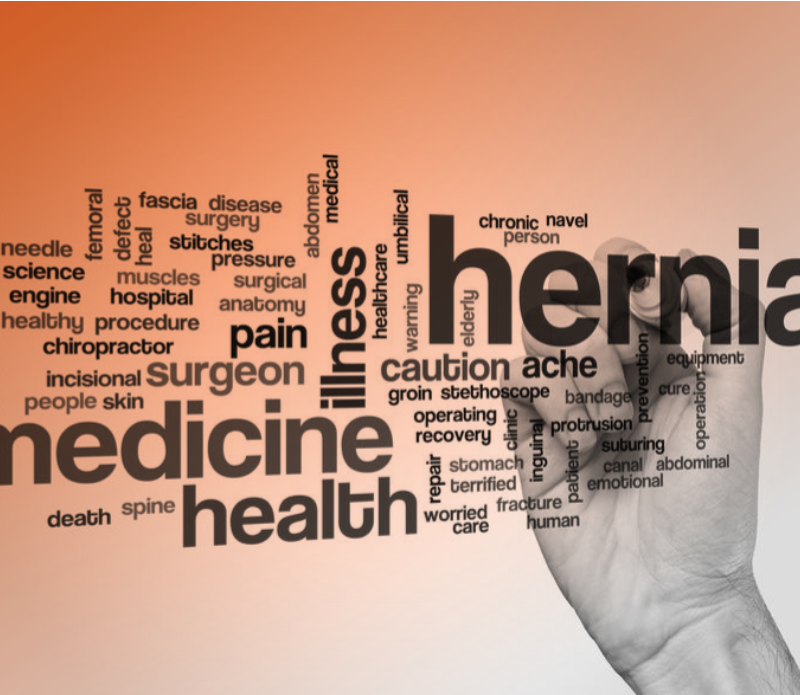
Each year, hernias affect more than 5 million Americans. Unfortunately, many individuals either choose to self-diagnose/treat or ignore the symptoms, both of which can have serious implications. Still, in the United States alone, over 800,000 hernia operations are performed each year. Since June constitutes Hernia Awareness Month, how can we keep our clients safe and injury-free?
Understanding the Different Types of Hernia
A hernia can occur at a variety of locations in the human body. Regardless of where it hits, this condition results in great discomfort, due to either an organ or surrounding tissue slipping through a weakness or tear in the muscles. Depending upon location, each specific type of hernia displays its own unique characteristics:
- Abdominal Hernia–a protrusion typically occurring above the “belt line”, most often resulting from weakness in the abdominal wall.
- Hiatal Hernia – often found in conjunction with a paraesophageal hernia, associated with gastric esophageal reflux.
- Umbilical Hernia – a bulging outward, either in or around the navel.
- Incisional Hernia – found along the line of a previous surgery, usually a result of weakness caused by surgical cutting of skin/muscle/tissue.
- Femoral Hernia – occurring more often in females, presenting at the top of the leg or groin area.
- Inguinal Hernia– more common in men, occurring below the “belt line” and on either/both sides of the groin/scrotum; the most common of all hernias, often with a tendency to recur despite successful surgical repair.
Common Causes
Regardless of location, all hernias share a common set of risk factors, most notably activities associated with an increase in intra-abdominal pressure. Chronic lifting without stabilized abdominal muscles, improper lifting techniques, and straining associated with prolonged constipation rank high on the list of culprits. A pregnancy accompanied by significant weight gain or scar tissue from past surgeries, can likewise contribute to the onset of a hernia.
Never Ignore Nagging Symptoms
Many bodybuilders learn over the years to deflect pain associated with strenuous exercise or heavy lifting, considering it an unavoidable consequence of building muscle mass. While perhaps true to some extent, certain warning signs can indicate a condition requiring medical attention:
- Pain in the affected area, especially when bending over, coughing or lifting
- Burning, gurgling or aching in the area of the hernia bulge
- Weakness, pressure or a feeling of heaviness in the abdomen
An untreated hernia does not disappear on its own. If left unaddressed, hernias can enlarge, leading such serious complications as bowel obstruction or the hampering of blood flow.
The Unique Sports Hernia
One category of hernia not addressed above deserves our attention: the sports hernia, also referred to as athletic pubalgia, a casualty resulting from a muscular injury or tendon/ligament tear near the groin. “In inguinal hernia, part of your intestine protrudes through a weak section in the abdominal wall, causing a bulge or lump. In the case of sports hernia, the intestine is not involved at all,” says Prof Wong Wai Keong, Senior Consultant at Singapore General Hospital.
Sports-Specific Injury
Certain particularly strenuous sports, those involving rapid twisting movements of the body, tend to bring on sports hernia, particularly wrestling, hockey or even soccer. While pain always accompanies the onset of such an injury, an athlete may assume that a period of rest will fix the problem. However, as soon as he resumes the activity, the pain returns…a sure sign to seek medical intervention. Diagnosis of a sports hernia begins with a physical exam. Sometimes a coach or athletic trainer may attempt to diagnose by observing the athlete in motion, to determine which specific movements incite the groin pain. Most often, however, accurate diagnosis relies on an MRI.
Repair and Recovery Options for Athletes
Surgical repair of most hernias remains the successful option of choice for a full recovery and return to action. Rather than radical surgery, the more popular laparoscopic procedure eliminates the need for major cutting, and patients typically return home on the same day. However, many serious athletes debate the necessity of surgery, opting instead for a more homeopathic healing process.
The effectiveness of this choice remains controversial; but one factor stands out as vitally important, regardless of the repair path one chooses. A 2012 study, published in the International Journal of Sports Physical Therapy, revealed a direct correlation between onset of injury/subsequent diagnosis and successful non-surgical outcomes. As always, consulting a sports medicine professional must take top priority before making any decisions.
Fault of the Squat or the Form?
In discussions surrounding causes of hernia, athletes commonly ask if performing squats might lead to such an injury. New clients may also touch on this subject prior to beginning a strength-building lower body workout. As long as one always adheres to proper form during each and every squat, one can and often does avoid sports hernias. However, within just a few months’ time, repeated poor form leads to uneven muscle development, lack of abdominal engagement, and perhaps worst of all, bad habits.
Even when a hernia heals post-surgery, the risk of recurrence increases dramatically if improper form continues. Rehabilitation exercises aimed at strengthening surrounding muscles and tissue play a key role in returning to normal exercise movement. As one would expect, this process involves gradual steps, often spanning 6-10 weeks. Beginning the rehab process as soon as sufficient healing permits offers one the best chances of success.
How We Can Help
This month, take the time to understand the hernia process, and remind clients to stay vigilant in their form and body alignment as you progress through the workouts. Review spotting techniques if necessary, to prepare yourself for any situation, especially when coaching novice clients. Raising awareness of this all-too-commonplace injury goes a long way toward prevention, as well as the building of a strong core foundation!
References:
physiqz.com/can-a-sports-hernia-heal-on-its-own/
physiqz.com/sports-hernia-from-squats-the-truth/
www.axappphealthcare.co.uk/health-information/wellbeing/would-weightlifting-make-my-hernia-worse/
spotmebro.com/lifestyle/weightlifting-hernia-symptoms-and-what-to-do/
www.iabhp.com/national-wellness-observance-calendar/hernia-awareness-month/
www.mywcms.org/news-and-events/events/hernia-awareness-month-article-1.pdf
www.healthxchange.sg/men/prostate-health/how-to-prevent-hernia-when-practicing-sports
www.csasurgicalcenter.com/blog-june-national-hernia-awareness-month.html
hartfordhealthcare.org/about-us/news-press/news-detail?articleId=20824&publicid=463






